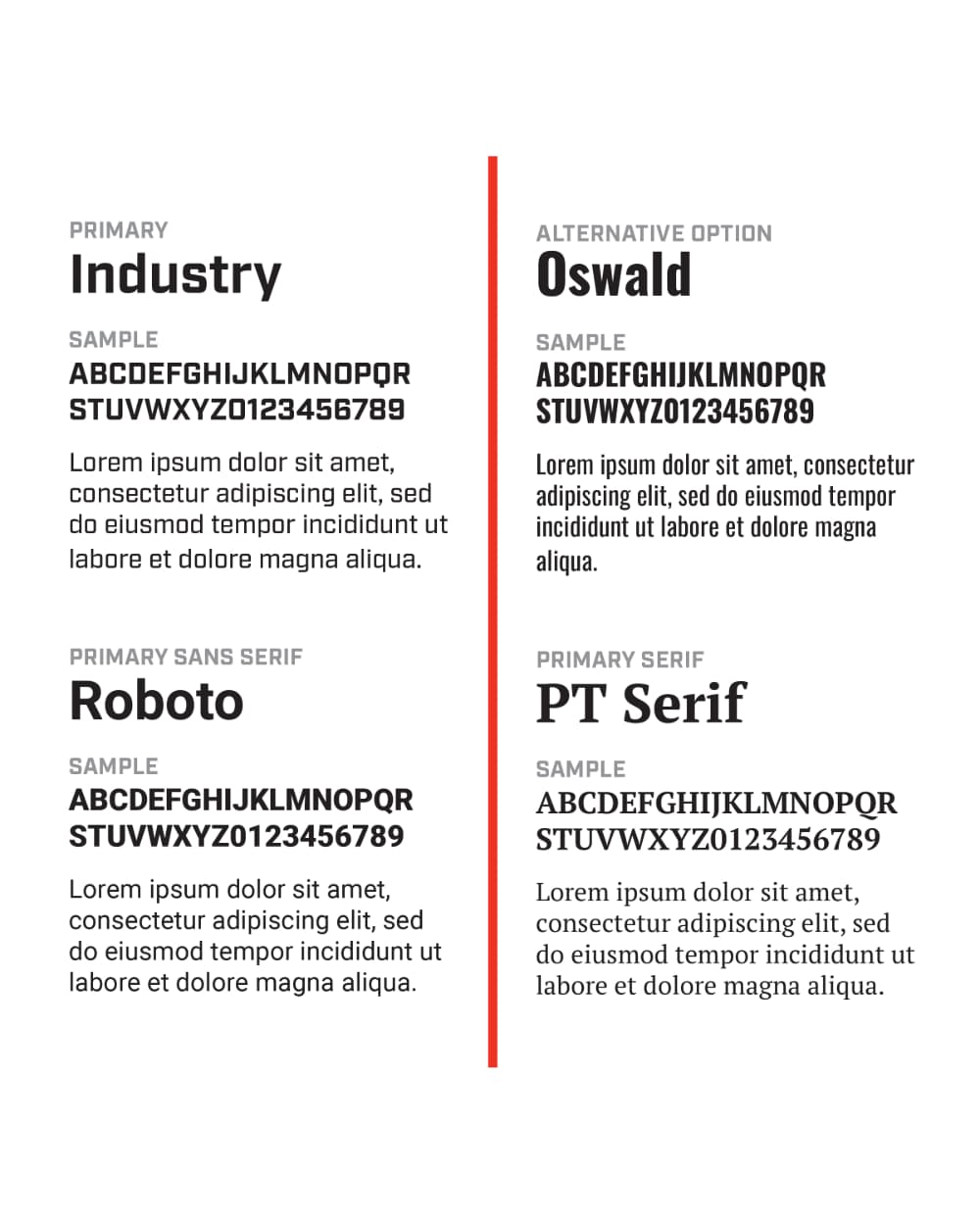Fonts and Typography
Thick or thin, elegant or energetic, every font has its own personality. PennWest California’s Creative Services team and our marketing and design partners are skilled at using typography to set a tone and convey a clear, unified message.
Preferred Fonts
A set of fonts has been defined for designers’ use in headlines and other bold type, as well as in text.
For the rest of us, a standardized set of readily available fonts has been identified, so all University communications are clear and consistent.
- Arial is the preferred desktop font for all business documents, email, PowerPoint presentations and other office needs. It is a contemporary, sans serif typeface that is easy to read in print and online. Arial has regular, bold, italic and bold italic styles. Varying these in an organized fashion can help to distinguish headlines, subheads and body copy.
-
If a serif font is absolutely necessary, use Times New Roman. But Arial remains the preferred typeface.
Email Fonts
Arial is the preferred font for PennWest California email, including your email signature. Learn more about setting up your official email signature.
For Designers and Other Pros
Display Fonts
In professionally designed materials, the display font used for headlines, signage
and other bold words is Industry, a strong sans serif font. Industry is available through a variety of vendors, including
Typekit by Adobe Creative Cloud. Oswald (available free from Google Fonts) is an acceptable substitute if needed.
The Factoria font family, created by the same artist who designed Industry, is used for the University Wordmark. This strong, geometric, serif font also is available from Typekit.
Text Fonts
Roboto and PT Serif are the preferred text fonts for professionally designed materials. These typefaces
are best used for long, full- or multi-page passages of text that invite engaged,
smooth reading at a variety of sizes. Both are available free from Google Fonts.

